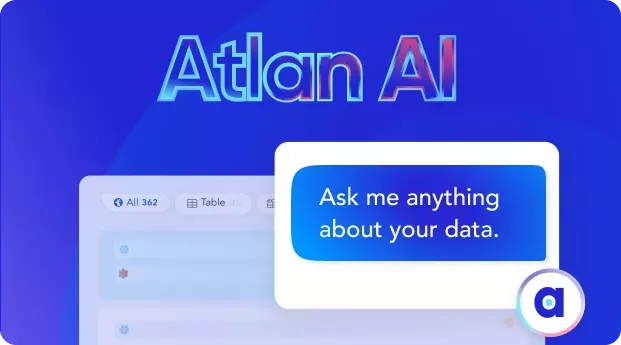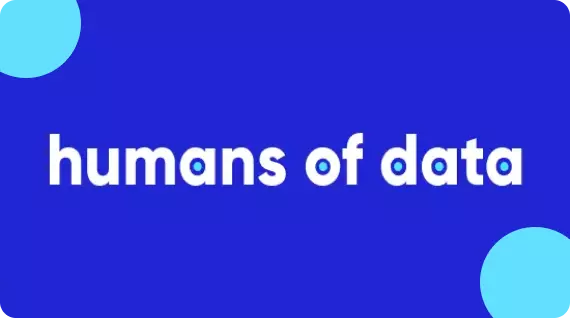Top 6 ELT Tools to Consider in 2024
Share this article
ELT tools streamline the data pipeline by Extracting data from various sources, Loading it into a centralized data repository (such as a data warehouse), and Transforming it for analysis.
See How Atlan Simplifies Data Governance – Start Product Tour
Here’s an overview of the top six ELT tools in 2024, widely recognized for their efficient data integration, extraction, and transformation capabilities:
- Airbyte: An open-source ELT platform with a vast range of connectors, Airbyte enables companies to customize data integration pipelines, facilitating easy source and destination integrations.
- StreamSets: Known for its powerful data integration infrastructure, StreamSets provides real-time data streaming and robust monitoring tools, making it ideal for complex, large-scale environments.
- Blendo: This tool simplifies data integration by automating data extraction and loading from multiple sources, offering pre-built analytics transformations for insights without heavy engineering.
- Hevo: A no-code ELT platform, Hevo focuses on real-time data integration with built-in transformation capabilities, providing a user-friendly interface for non-technical users.
- Fivetran: Popular for its simplicity, Fivetran automates ELT processes with pre-built connectors, supporting efficient data loading and transformation for scalable data warehouses.
- Stitch: Known for its flexibility, Stitch is an open-source ELT tool that provides data extraction and loading, allowing users to handle transformations in their data warehouse.
Each tool supports varying levels of customization, real-time data capabilities, and data source compatibility, making them suitable for different business analytics and integration needs.
This article covers the top ELT tools that offer you more flexibility when working with large data sets.
Table of Contents #
- Airbyte
- StreamSets
- Blendo
- Hevo
- Fivetran
- Stitch
- How to evaluate ELT tools
- Atlan for Data Security & Compliance
- FAQs on ELT tools
- ELT tools: Related reads
- Related deep dives on popular data tools
Airbyte #
Airbyte is an open-source ELT tool for modern data teams. It extracts raw data from sources such as databases and web applications with pre-built or custom connectors within minutes and loads them into the destination repositories with the Airbyte UI or APIs.
Each connector runs as a Docker container and allows you to use your language of choice. You and schedule pipeline updates.
What are the main capabilities of Airbyte? #
- Airbyte provides a connector development kit (CDK) with 140+ pre-built connectors, simplifying the building and maintenance of connectors with a low-code/no-code environment.
- You can monitor individual pipelines with real-time error logs. You can also set up real-time alerts and notifications with webhook.
- You’re also in complete control of the pipelines, and you can debug them as per your needs.
- Airbyte integrates with your data stack — Kubernetes, Airflow, dbt, and more modern technologies. You can also add custom transformations using dbt.
Airbyte resources #
Airbyte Docs | Airbyte API Docs | Changelog
StreamSets #
StreamSets is a continuous big data loading platform that builds resilient data pipelines and manages data modification. It helps build smart data pipelines that cater to all data engineering life cycle needs.
These pipelines facilitate data migration across hybrid and multi-cloud environments without requiring rewrites. StreamSets also enhances the ELT process by allowing data pipeline streaming for transparent data movement and management.
What are the main capabilities of StreamSets? #
- StreamSets offers a single UI to design, deploy, monitor, and manage smart data pipelines. It’s scalable in any cloud or hybrid environment.
- StreamSets provides complete visibility and control over all pipelines and their operations. These pipelines also support data replication, merging, segmenting, and routing.
- You can build smart pipelines that provide continuous data flow even when structures and schemas change.
StreamSets resources #
StreamSets Documentation | StreamSets Setup | StreamSets DataOps Blog
Blendo #
Blendo provides ready-to-use pipelines for the extraction and loading processes of ELT. It lets you speed up data analysis by extracting raw data from disparate sources in minutes and loading it into a data warehouse.
Blendo easily integrates with data repositories such as Amazon Redshift, Google BigQuery, SQL Server, Snowflake, and Panoply as well as BI and analysis tools such as Chartio, Google Data Studio, Tableau, and Sisense.
Blendo also offers a free 14-day trial to help you get started.
What are the main capabilities of Blendo? #
- You can use ready-made connectors to connect to any data source, without writing any scripts or complex integration workflows.
- Blendo reduces data integration workload by automating data migrations, with minimal maintenance and configurations.
- Blendo provides analytics-ready and pre-defined data models for faster data exploration.
Blendo resources #
Blendo Guides | Blendo Knowledge Base | Blendo Blog
Hevo #
Hevo offers no-code, bi-directional data pipelines that streamline and automate data flows. It offers a user-friendly interface for data replication, cleansing, and preparation.
Hevo modernizes ELT data transformations using the ‘models and workflows’ approach — models enable data transformations, and workflows enhance these models by merging them for deeper analysis.
What are the main capabilities of Hevo? #
- Hevo supports 100+ ready-to-use integrations across databases, SaaS apps, cloud platforms, and streaming services.
- You can automate data preparation with Hevo’s schema detection for mapping incoming data to the right target schema.
- Hevo empowers you to build scalable data pipelines that can handle millions of records per minute.
- You can also modify, monitor, and observe the flow of data in real-time.
- Hevo provides secure and fault-tolerant services by ensuring that no data gets lost or corrupted. The corrupted data set gets corrected separately without affecting other workflows.
Hevo resources #
Hevo Documentation | Hevo API Docs | Hevo Blog
Fivetran #
Fivetran is a fully-automated data ingestion and replication tool for extracting and loading data. It lets you build no-maintenance data pipelines that quickly deploy to ingest and replicate data into warehouses.
Fivetran has also incorporated data transformations into a unified ELT platform to help data analysts with data preparation, analytics, and reporting.
What are the main capabilities of Fivetran? #
- Fivetran offers a complete data integration package. It incorporates data transformations and provides built-in version-control, documenting, and testing.
- Fivetran provides data monitoring features that raise alerts and allow you to redo corrupt processes. It also ensures the error-free running of all ELT processes.
- Fivetran enables database replication, and advanced analytics for marketing, sales, finance, and customer success.
Fivetran resources #
Fivetran Documentation | Fivetran Status
Stitch #
Stitch is an open-source, cloud-first ELT data integration platform owned by Talend. It’s a self-service ELT tool that automates data pipelines for rapid data flow.
It offers a simple user interface that enables single-click data ingestion, empowering analysts and business users to perform data transformations and analytics.
What are the main capabilities of Stitch? #
- Stitch enables data type conversion and schemas management by automatically adapting incoming data to its target schema.
- You can schedule the loading of data into schemas so it can be analyzed when required.
- Stitch users can quickly adapt to using the tool with its easy-to-understand processes. Hence, Stitch does not require its users to be technically advanced.
Stitch resources #
Stitch Documentation | Stitch Trial
How to evaluate ELT tools #
The most common requirement from ELT tools is to reduce or eliminate the technical burden on data teams by automating several processes, such as data extraction, ingestion, and loading. ELT tools also let you integrate analytics tools directly with the target warehouses and lakes.
Here are some of the other factors you should consider when evaluating ELT tools:
- The data types and sources that the ELT tool can handle
- The use cases where ETL isn’t required and ELT is a better option
- The cost and time savings in data extracting, loading, and processing
- The amount of effort and resources saved from transforming data in the target warehouses or lakes
Atlan for Data Security & Compliance #
Atlan helps customers ensure data security and compliance when using semi-structured data with features that include:
- Automated data classification
- Access control features like Role-Based Access Control
- Masking policies
- Bi-directional tag syncing
These features work together to protect sensitive data, automate compliance tasks, and provide visibility into data access and usage.
Also, Atlan can help to improve data security and compliance by providing visibility into data lineage, including across different systems and environments. By understanding the flow of data, organizations can more easily identify and mitigate potential risks.
Legendary Consumer Brand Dr. Martens Improves Data Discoverability, Impact Analysis, and Business Collaboration on Data With Atlan.
At a Glance #
- Dr. Martens, an iconic global footwear brand with a six-decade heritage, evaluated the data catalog space in order to drive self-service atop their quickly modernizing data stack.
- Choosing Atlan, their data team quickly implemented a self-service catalog to provide context around their most critical data assets.
- Atlan’s implementation has accelerated time-to-insight for Dr. Martens’ internal data consumers, and is reducing time spent on impact analysis from four to six weeks, to under 30 minutes for data practitioners.
Book your personalized demo today to find out how Atlan can help your organization in ensuring data security and compliance.
FAQs on ELT tools #
1. What are the best ELT tools for my business needs? #
The top ELT tools vary based on business requirements like data volume, cloud compatibility, and budget. Some widely recognized ELT tools include Airbyte, StreamSets, Blendo, Hevo, Fivetran, and Stitch, each offering unique features that cater to diverse data management needs.
2. How do ELT tools differ from ETL tools? #
Unlike ETL tools, which transform data before loading it into a database, ELT tools load data first into a data lake or warehouse and then perform transformations. This approach leverages cloud storage capacities and supports faster data integration and analysis.
3. What benefits do ELT tools provide for data management? #
ELT tools simplify data workflows by loading data into centralized repositories before transforming it, which optimizes storage and enables easier access to unstructured and structured data alike. This approach benefits data teams by enhancing flexibility, scalability, and time-efficiency.
4. How can I automate ELT processes effectively? #
Many ELT tools offer automation features that handle repetitive data workflows, ensuring continuous data updates. Scheduling transformations, setting up triggers, and using cloud-based integration features can streamline data workflows significantly.
5. Which ELT tools are best for cloud-based data integration? #
For cloud data integration, tools like Airbyte, StreamSets, Blendo, Hevo, Fivetran, and Stitch provide seamless integration with popular cloud platforms, facilitating scalable data processing and storage.
6. Are there any low-cost ELT tools for small businesses? #
Yes, several budget-friendly ELT tools, like Airbyte and Blendo, cater to small businesses, focusing on essential ELT functionalities without extensive costs. These tools provide a cost-effective solution for companies with lighter data processing needs.
ELT tools: Related reads #
- ETL vs. ELT: Which data integration process is ideal?
- Data transformation: What, how, and why it’s needed
- Data ingestion vs. data integration: How are they different?
- The future of the modern data stack in 2024
- The building blocks of a modern data platform
Related deep dives on popular data tools #
- 7 popular open-source ETL tools
- Top 5 ETL tools to consider in 2024
- 9 best data discovery tools
- 5 popular open-source data catalog tools to consider in 2024
- 7 popular open-source data governance tools to consider in 2024
- 12 popular observability tools in 2024
- 10 popular transformation tools in 2024
- Data Governance in Action: Community-Centered and Personalized
- Data Governance Framework — Examples, Templates, Standards, Best practices & How to Create One?
- Data Governance Tools: Importance, Key Capabilities, Trends, and Deployment Options
- Data Governance Tools Comparison: How to Select the Best
- Data Governance Tools Cost: What’s The Actual Price?
- Data Governance Process: Why Your Business Can’t Succeed Without It
- Data Governance and Compliance: Act of Checks & Balances
- Data Governance vs Data Compliance: Nah, They Aren’t The Same!
- Data Compliance Management: Concept, Components, Getting Started
- Data Governance for AI: Challenges & Best Practices
- A Guide to Gartner Data Governance Research: Market Guides, Hype Cycles, and Peer Reviews
- Gartner Data Governance Maturity Model: What It Is, How It Works
- Data Governance Roles and Responsibilities: A Round-Up
- Data Governance in Banking: Benefits, Implementation, Challenges, and Best Practices
- Data Governance Maturity Model: A Roadmap to Optimizing Your Data Initiatives and Driving Business Value
- Open Source Data Governance - 7 Best Tools to Consider in 2024
- Federated Data Governance: Principles, Benefits, Setup
- Data Governance Committee 101: When Do You Need One?
- Data Governance for Healthcare: Challenges, Benefits, Core Capabilities, and Implementation
- Data Governance in Hospitality: Challenges, Benefits, Core Capabilities, and Implementation
- 10 Steps to Achieve HIPAA Compliance With Data Governance
- Snowflake Data Governance — Features, Frameworks & Best practices
- Data Governance Policy: Examples, Templates & How to Write One
- 7 Best Practices for Data Governance to Follow in 2024
- Benefits of Data Governance: 4 Ways It Helps Build Great Data Teams
- Key Objectives of Data Governance: How Should You Think About Them?
- The 3 Principles of Data Governance: Pillars of a Modern Data Culture
Photo by Yagyaansh Khaneja
Share this article










